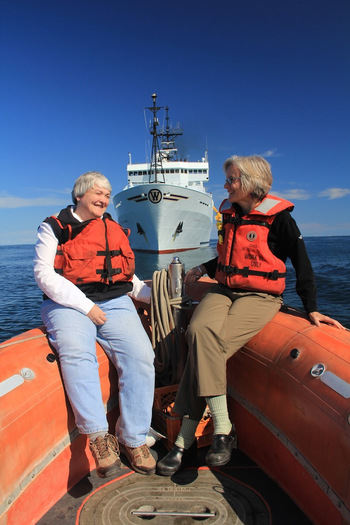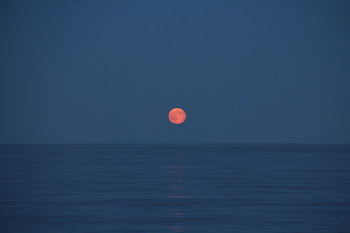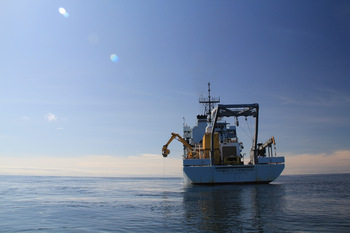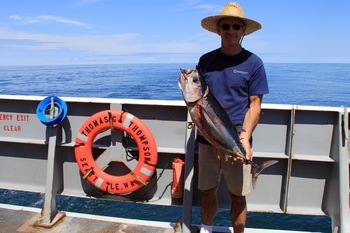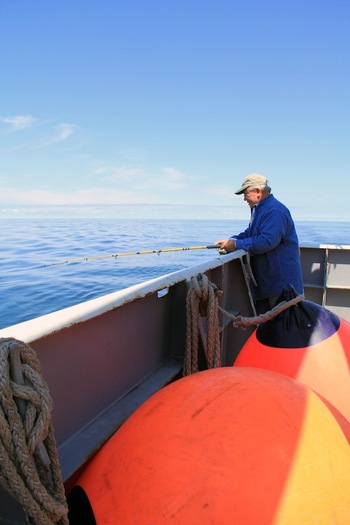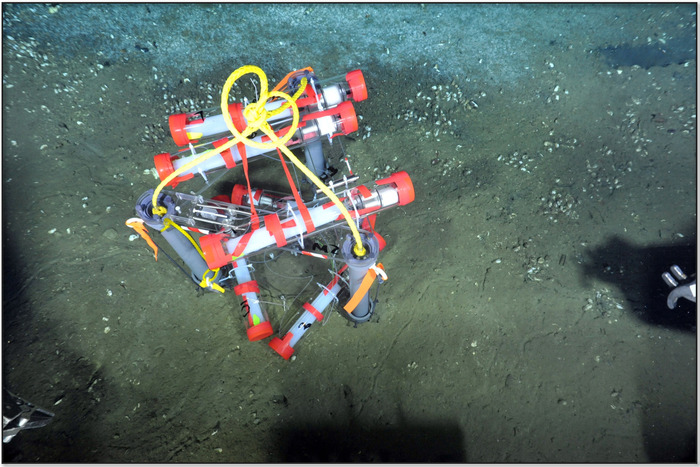We arrived on station at Southern Hydrate Ridge at 1400h today and began an EM302 multibeam survey across Northern and Southern Hydrate Ridge. Last year during the Enlighten'10 expedition, we came across two active bubble plumes at Southern Hydrate. During the EM302 survey, we were able to image multiple plumes across Hydrate Ridge. After the completion of the multibeam survey, we cast a plankton net tow to 100m and then launched ROPOS for dive 1458. This dive was primarily led by Evan Solomon, a geochemist from the University of Washington, who has been aiding in site assessments for the OOI-RSN secondary node site locations. In addition to scouting for OOI-RSN instrument sites, Evan also deployed some instruments during the dive. Below is his summary of ROPOS dive 1458.
After months of design, testing, re-design, fabrication, and preparation, today was the big day. I had the opportunity to deploy two new continuous fluid flow meters capable of monitoring fluid flow rates and collecting fluids for chemistry within marine sediments in three-dimensions over periods of weeks to years. The deployment was a success, and the instruments are currently collecting samples at southern Hydrate Ridge, offshore Oregon.
The primary objective of ROPOS dive 1458 was to perform a reconnaissance survey of four primary sites to constrain the location for the upcoming RSN secondary node deployments. Another objective of the dive was to compare the vehicle's navigation with locations fixed with the ROV Jason II’s navigation from the Enlighten’10 expedition last year. We found that the navigation between vehicles is only offset by ~1 m. We also narrowed down the future secondary node deployment locations to two sites, based on seafloor biological indicators of fluid flow (e.g., bacterial mats, clam fields), hummocky bathymetry (indicative of sub-seafloor gas hydrates, carbonates, and free gas), and indicators of gas venting (pockmarks, bubble plumes, “El Crack”). The preferred locations are the northeast portion of the main seep area and the south central portion.
After the reconnaissance survey was completed, the first fluid flow meter/chemical sampler called “The Mosquito” was deployed in an area with thick/lush bacterial mats and clams near the center of the main seep area that was not present last year. This indicates that fluid flow has been active and likely vigorous in the past year at this location. The instrument was successfully deployed and will sample fluids and monitor flow rates at this location for ~4 days. After the Mosquito deployment, three peepers were deployed in the same area to validate the flow rate measurements made by the Mosquito. The peepers consist of a polycarbonate plate (~8.5” x 14”) with wells bored in that hold sample. A membrane is placed on top of these wells. The wells are initially filled with degassed seawater, and, upon insertion into the sediments, solutes diffuse out of the peeper wells and from the surrounding pore fluids until chemical equilibrium is reached. Solute concentration profiles collected from these instruments are then modeled for flow rates using established numerical models. At the same bacterial mat location, a current meter developed by APL was deployed ~4 m to the north of the Mosquito.
All of the instruments deployed at this location will be recovered ~4 days later on the second to last dive of this leg of the expedition. After the current meter was in place, we deployed the second Mosquito in a “background” location (devoid of benthic biological communities), but adjacent to “El Crack.” This fissure was not present the prior year, and was in fact a mound with a intermittent bubble plume that emitted hydrocarbons into the water column. We did not acquire the plume during this dive, but this large seafloor fissure indicates that gas and fluid expulsion was vigorous at this site over the past year, creating the tensional seafloor cracks. The Mosquito was placed about 4 m from the fissure and was deployed successfully. It will continuously sample for fluid chemistry and monitor flow rates over the next year, and may provide insight into the subsurface hydrogeology in this area of episodic gas discharge. We had originally planned to collect 5 push cores during the dive; 3 for microbiology and 2 for sediment porosity. The swing arm on ROPOS failed, and we were not able to collect these samples. They will be collected on a subsequent dive. The final 2 hours of Dive 1458 was spent surveying the northeast portion of the seep area, an area where a bubble plume was observed in an EM302 survey earlier in the day, and the pinnacle at the southern portion of the seep area.
